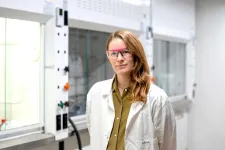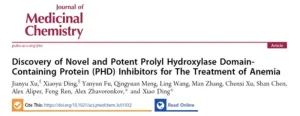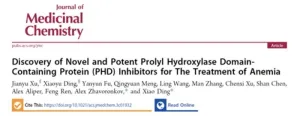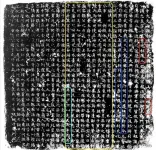(Press-News.org) Researchers with McMaster University have created the instruction manual that will help scientists across the globe find hard to detect B cells.
Led by PhD student Alyssa Phelps and Department of Medicine Assistant Professor Josh Koenig, researchers wanted to chart a path to finding these cells as part of their work in understanding food allergies. Their work was published in the journal Nature Protocols on Jan. 19, 2024.
B cells are a type of immune cell that makes antibodies. These cells help fight conditions like cancer and infections but can also cause autoimmune diseases and allergies.
"One of the big problems with trying to study these B cells, the ones that make these antibodies that have all kinds of different and very important functions, is that they're really, really, rare. It's hard to find them. And so, you have to have very good tools that will help you study these things," Koenig says.
To give an example of just how rare these cells can be, Koenig pointed to a peanut-specific B cell. It makes up less than 0.0001 per cent of immune cells in human blood.
The team adopted a method originally created by Justin Taylor, who now operates the Taylor Lab out of the University of Virginia. Taylor created a method using antigen tetramers to sensitively tag and enrich specific B cells so they can be detected.
Tetramers are made up of four antigen molecules, which in this case, can be customized by scientists. The customization is vast and can cover everything from peanuts to COVID-19 specific B cells.
"After using the technology for a few years in several of our studies and making multiple different allergen tetramers and antigen tetramers for other people, we decided to write up a protocol paper to help other people study these incredibly important B cells,” says Phelps.
In addition to better understanding how allergies work in humans, tetramers can be used to study the efficacy of vaccines. This is something that was done by Koenig and his team in assisting McMaster researchers Matthew Miller, Brian Lichty, and Zhou Xing in determining whether their vaccine candidate activated protective COVID-specific B cells.
“With these protocols now published, more researchers around the globe will be able to make these types of tools to help to push their science ahead,” Taylor says.
The study was supported in part by a $10 million donation by the Schroeder Foundation to McMaster University. Funding was also provided from ALK Abello A/S, a pharmaceutical company based in Denmark.
------
For an interview with Josh Koenig, you can reach him directly by email at koenigjf@mcmaster.ca.
For a copy of the study or for any other interviews, contact Adam Ward, media relations officer with McMaster University's Faculty of Health Sciences by emailing, warda17@mcmaster.ca.
END
HOUSTON – (Jan. 19, 2024) – Amanda Marciel describes her current research, supported by a CAREER Award from the National Science Foundation, as an effort to understand and make “really soft, stretchable stuff.”
Expressed more formally, she works at the molecular level to design branch elastomers that return to their original shape after being stretched.
“What I’m doing is creating synthetic networks that have a gel-like softness and are highly elastic for such applications as stretchable ...
Clinical stage generative artificial intelligence (AI)-driven biotechnology company InSilico Medicine (“InSilico”), today announced that the Journal of Medicinal Chemistry, an ACS Publications journal focusing on critical studies about molecular structure and biological activity, has published the company’s discovery of a novel PHD inhibitor for the treatment of anemia. The academic breakthrough is powered by Chemistry42, its proprietary generative chemistry platform consisting of more than 40 selected generative models.
As suggested in previous studies, the inhibition ...
Insilico Medicine(“Insilico”), a clinical stage generative artificial intelligence (AI)-driven drug discovery company, recently published an early research that it has identified MYT1 as a promising new therapeutic target for breast and gynecological cancer, and discovered a series of novel, potent, and highly selective inhibitors specifically targeting MYT1. These findings were supported by Insilico’s AI-driven generative biology and chemistry engine and published in the Journal of Medicinal Chemistry in Dec 2023.
Across ...
Professor Yoon-Kyoung Cho from the Department of Biomedical Engineering at UNIST has been elected as a member of the National Academy of Engineering of Korea (NAEK), the most prestigious organization in the field of engineering in Korea.
On January 4, the National Academy of Engineering of Korea (NAEK) announced the election of 50 new members, comprising 25 academic and 25 industrial figures, in recognition of their distinguished and ongoing achievements in original research. Membership in NAEK is considered one of the highest professional distinctions for engineers. Professor Cho’s name appeared ...
A groundbreaking study conducted by Professor Jiyoung Park and her research team in the Department of Biological Sciences at UNIST has identified FAM3C, a metabolism-regulating signaling molecule produced by cancer-associated adipocytes (CAAs), as a key regulator of breast cancer progression within the tumor microenvironment (TME). The findings, published in the prestigious academic journal Cancer Research, shed light on the potential for targeted therapies in the treatment of breast cancer.
The study demonstrates that overexpression of FAM3C in cultured adipocytes significantly reduces cell death in both adipocytes and co-cultured breast cancer ...
There are approximately 425 million people worldwide with diabetes. Approximately 75 million of these inject themselves with insulin daily. Now they may soon have a new alternative to syringes or insulin pumps. Scientists have found a new way to supply the body with smart insulin.
The new insulin can be eaten by taking a capsule or even better, within a piece chocolate.
Inside these we find tiny nano-carriers to which the insulin is encapsulated. The particles are 1/10,000th the width of a human hair and so small that you cannot even see them under a normal microscope.
“This ...
MIAMI, FL – January 19, 2024 – Researchers from Miami Cancer Institute, part of Baptist Health South Florida, today published a study in Trends in Cancer that analyzes the use of tissue-agnostic therapeutics in patients with primary brain tumors (PBTs). The publication describes the current and potential impact of tissue-agnostic therapies on the management of PBTs. As part of the publication, the researchers discuss data from clinical trials of tissue-agnostic targets for PBTs in the context of challenges in managing these tumors. They also describe additional tissue-agnostic ...
A McGill-led team of researchers have made an important discovery shedding light on the genetic basis of a rare skeletal disorder. The study, published in Nature Communications, reveals that a defect in a specific gene (heterozygous variants in the matrix Gla protein, or MGP) may cause a disorder that affects the structure of connective tissues that supports the body.
MGP is a special protein found in blood vessels and cartilage that helps prevent the hardening of these tissues in the body. If MGP is completely missing, it can lead to Keutel syndrome, a rare condition where tissues become calcified, causing issues in the skeleton and blood vessels.
However, in this case, ...
Infantile epileptic spasms syndrome (IESS), often called infantile spasms, is the most common form of epilepsy seen during infancy. Prompt diagnosis and referral to a neurologist are essential. But research suggests infants are likely to experience delays in referral to a neurologist if their families are from historically marginalized racial/ethnic backgrounds. A new open-access training module for front-line providers from OPENPediatrics, an online learning community launched by Boston Children’s Hospital, aims to change that.
The free, publicly accessible Infantile Spasms curriculum includes short lectures and videos illustrating ...
In studying social mobility in today’s industrialized nations, researchers typically rely on data from the World Economic Forum or, in the United States, the General Social Survey. But examining the same phenomena from past centuries is a more daunting task because relevant statistics are harder to come by.
However, a social science research team has now discovered a way to examine professional advancement in medieval China (618-907 CE) by drawing from the tomb epitaphs during the Tang Dynasty. These epitaphs contain the ancestral lineages, names, and office titles (e.g., Minister of Personnel, Minister of the Court of Judicial Review, and ...






